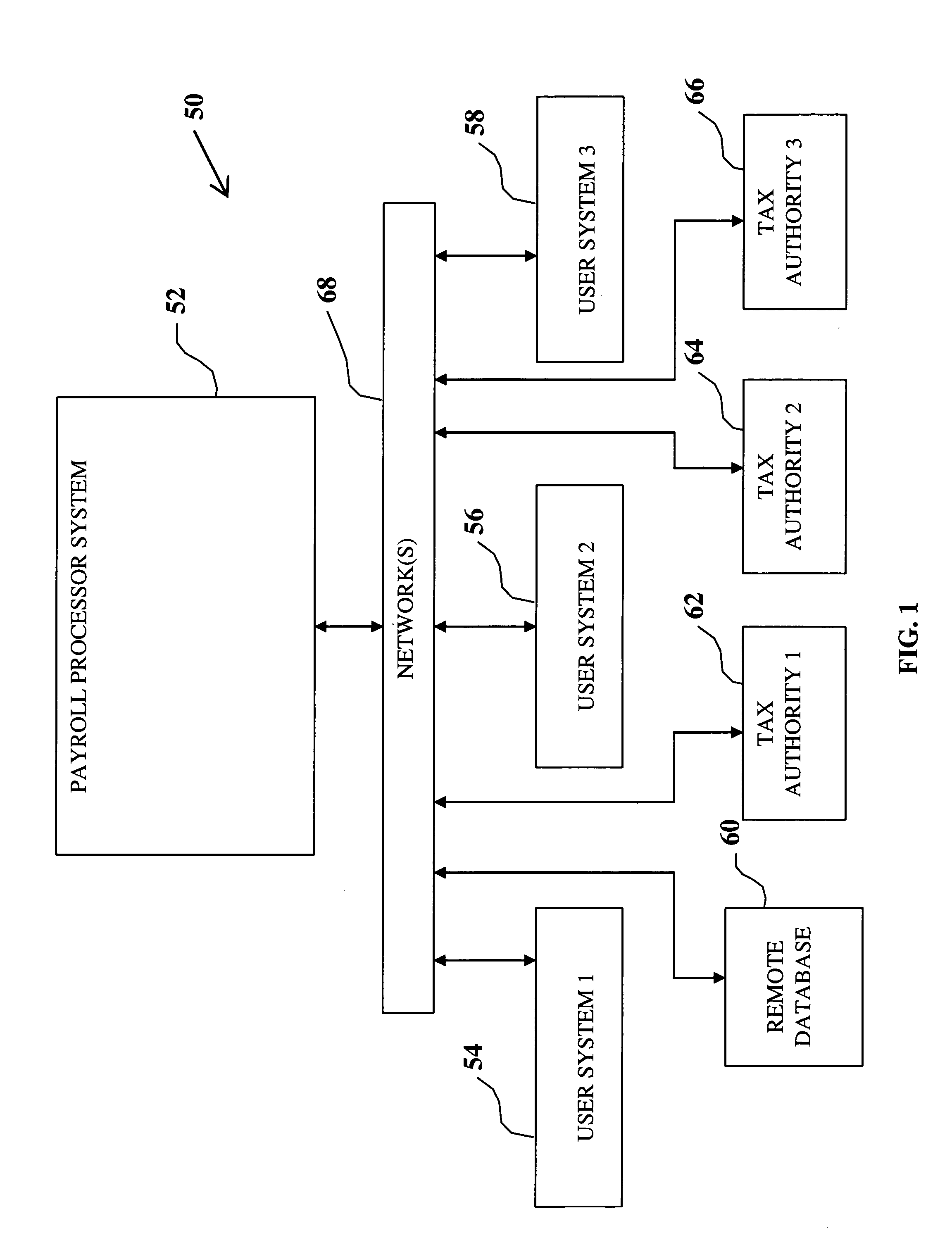Payroll processor system and method
a payroll processor and system technology, applied in the field of system and method for payroll processing, can solve the problems of consuming time and human resources, difficult to maintain the system, and manual creation of wage listing data forms, etc., and achieve the effect of reducing the dependency on the system or the printer
- Summary
- Abstract
- Description
- Claims
- Application Information
AI Technical Summary
Benefits of technology
Problems solved by technology
Method used
Image
Examples
Embodiment Construction
[0041] Referring now to FIG. 1, there is shown a block diagram of one embodiment of the system according to the present invention. In this embodiment, system 50 comprises payroll processor system 52, first user system 54, second user system 56, third user system 58, remote database 60, first tax authority system 62, second tax authority system 64, third tax authority system 66, and network(s) 68. Payroll processor system 52 comprises a processor system as is well known in the art. Payroll processor system 52 may comprise any combination of hardware and / or software. For example, payroll processor system 52 may comprise a server having payroll processor software operating thereon. Payroll processor system 52 is in bidirectional communication with network(s) 68 through which bidirectional communication can be made by payroll processor system 52 with first user system 54, second user system 56, third user system 58, remote database 60, first tax authority system 62, second tax authority...
PUM
 Login to View More
Login to View More Abstract
Description
Claims
Application Information
 Login to View More
Login to View More - R&D
- Intellectual Property
- Life Sciences
- Materials
- Tech Scout
- Unparalleled Data Quality
- Higher Quality Content
- 60% Fewer Hallucinations
Browse by: Latest US Patents, China's latest patents, Technical Efficacy Thesaurus, Application Domain, Technology Topic, Popular Technical Reports.
© 2025 PatSnap. All rights reserved.Legal|Privacy policy|Modern Slavery Act Transparency Statement|Sitemap|About US| Contact US: help@patsnap.com



